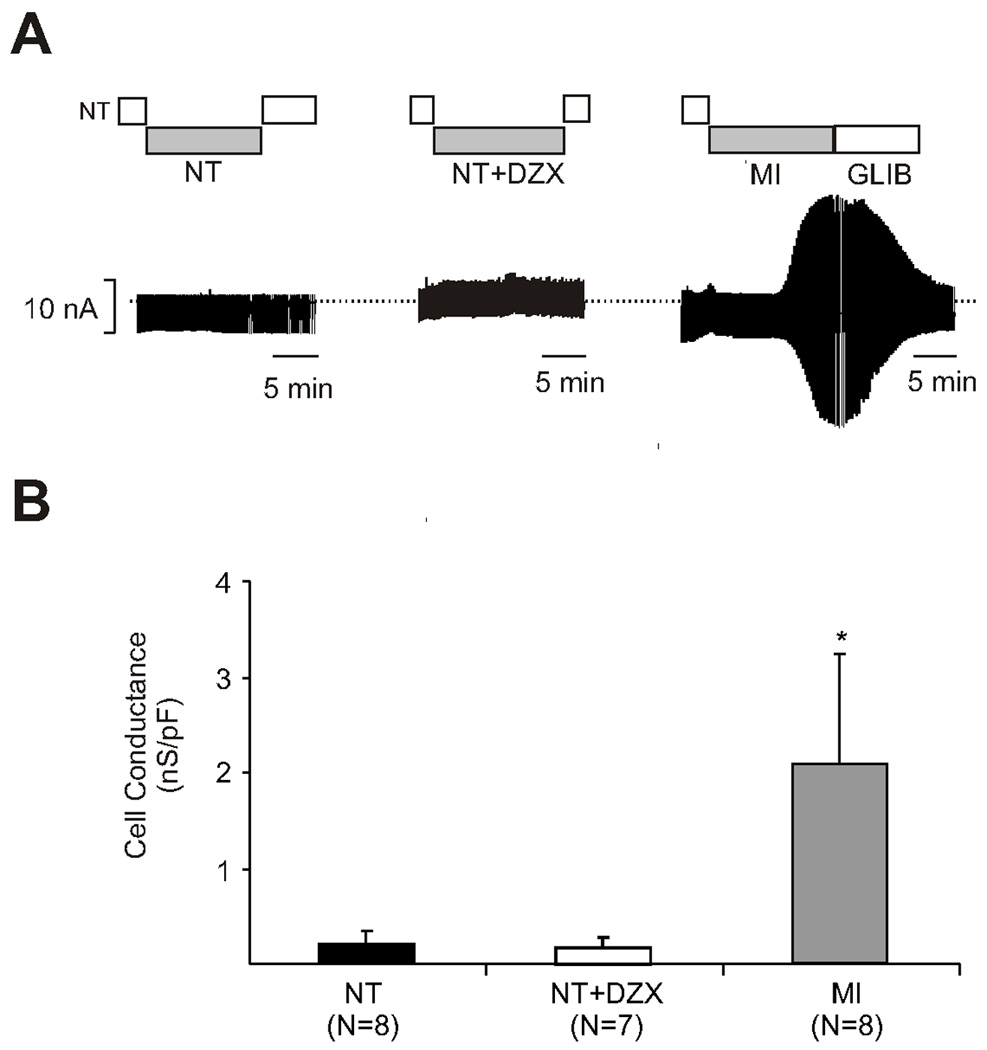Figure 2.

A. Diazoxide does not elicit sarcolemmal adenosine triphosphate–sensitive potassium current in wild type myocytes. The y-axis represents potassium current (nA) and the x-axis represents time. Wild type myocytes in were initially exposed to normal Tyrode’s solution for baseline potassium current measurement, followed by test solution, followed by reexposure to normal Tyrode’s solution. The first graph (far left) is a representative cell exposed to normal Tyrode’s solution throughout the experiment. The second graph (middle) is a representative cell exposed to normal Tyrode’s solution with diazoxide during the test period. The addition of diazoxide to normal Tyrode’s solution did not alter the potassium current. The third graph (far right) is a representative cell exposed to normal Tyrode’s solution followed by metabolic inhibition. Metabolic inhibition was associated with an increase in potassium current which is reversed by the addition of glibenclamide. DZX is diazoxide, GLIB is glibenclamide, MI is metabolic inhibition, and NT is normal Tyrode’s solution.
B. Diazoxide does not elicit sarcolemmal adenosine triphosphate-sensitive potassium current in wild type myocytes. Cell conductance is represented in nanoseimens/picofarads (nS/pF, y axis) and the test solution on the x axis. Test solutions included: normal Tyrode’s, normal Tyrode’s solution in addition to diazoxide, and metabolic inhibition. When correcting for cell conductance, there was a significant increase in potassium current in cells exposed to metabolic inhibition (*p= 0.002 vs. NT). DZX is diazoxide, MI is metabolic inhibition, NT is normal Tyrode’s solution, and N is number of myocytes.
